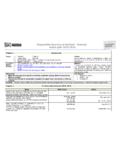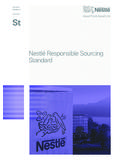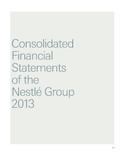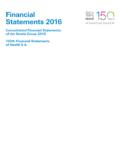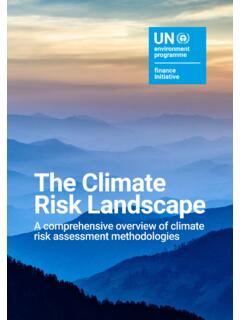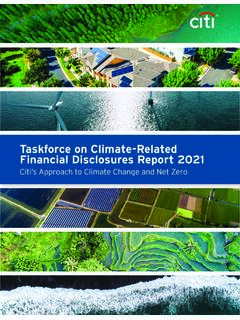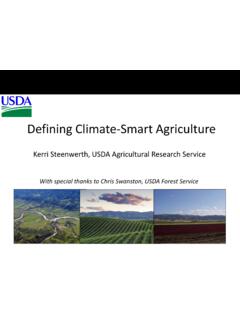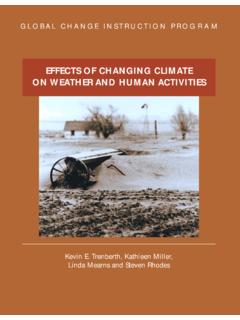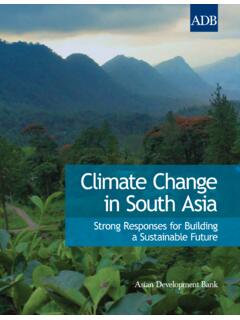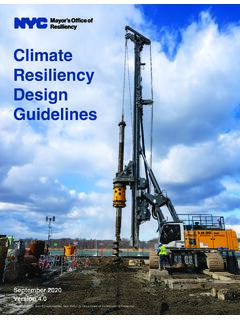Transcription of Nestlé’s Task Force on Climate-related Financial …
1 nestl s Task Force on C li mate-r elate d Financial Disclosures (TCFD) Report202003 Introduction05 Governance06 2021 climate change governance 07 Strategy08 climate modeling approach 09 climate scenarios10 Modeling assumptions 11 Scenario analysis outcomes14 Assessment of resilience 17 Risk management19 Metrics and targets20 2020 Climate-related metrics and targets21 Footnotes and disclaimercontents2 Nestle s TCFD Report 2020 Risk managementMetrics and targetsIntroductionGovernanceStrategyAs the world s largest food and beverage company, nestl takes the threat of climate change seriously.
2 While climate change poses risks to current business models, it also creates opportunities for companies that act decisively in a competitive environment. nestl is stepping up to this challenge of leading our industry toward a sustainable future, while transparently reporting our progress. Introduction3 Nestle s TCFD Report 2020 Risk managementMetrics and targetsIntroductionGovernanceStrategyIn 2019, nestl pledged to achieve net zero greenhouse gas (GHG) emissions across our value chain. In 2020, in our Net Zero Roadmap, we specified our plan to halve nestl s GHG emissions by 2030 and to achieve net zero by 2050 even as our business continues to grow.
3 As more than 95% of our emissions occur outside of our own four walls, we cannot achieve net zero alone. To meet our pledge, we depend on multiple external factors including action from governments and regulators to enable economic and social transformations for a net zero carbon future. This report describes how climate change may impact our business and how we can successfully transition to a lower-carbon economy and adapt to a warming world. Our understanding of the challenges around climate change continues to evolve and we will update our mitigation plans has adopted the recommendations of the Task Force on Climate-related Financial Disclosures (TCFD).
4 Using the TCFD framework, this report provides a progress update across each of the TCFD pillars: Governance, Strategy, Risk Management, and Metrics and Targets. It sets out our current understanding of the strength and resilience of our strategy and business model under different climate scenarios. The process of climate scenario analysis is rapidly evolving, and it is iterative. We expect the approaches, tools and data quality to mature over time, which will contribute to our understanding of climate risks and opportunities. As we continue to accelerate the transformation of our value chain, these assessments will be integrated into our strategic planning and enterprise risk management frameworks to help strengthen our resilience and adaptation to climate image4 Nestle s TCFD Report 2020 Risk managementMetrics and targetsIntroductionGovernanceStrategyGov ernance of our public actions and commitments to act on climate change sits at the highest level of our company.
5 Our governance of climate change is evolving in recognition of its growing significance in society and our increasing understanding of its impact on our business. Governance5 Nestle s TCFD Report 2020 Risk managementMetrics and targetsIntroductionGovernanceStrategy6 Nestle s TCFD Report 2020 Risk managementMetrics and targetsIntroductionGovernanceStrategy202 1 climate change governanceAt Board level, as of the Annual General Meeting 2021, nestl is splitting its existing Nomination and Sustainability Committee into a separate Nomination Committee and a focused Sustainability Committee.
6 This reflects the importance of sustainability in nestl s corporate governance and allows Board members to dedicate more time and focus on each of these important topics. The Sustainability Committee will provide strategic guidance on Climate-related matters and will report to the full Board of Directors, which has overall oversight. The Sustainability Committee of the Board will meet at least three times per Environmental, Social and Governance (ESG) Sustainability Council has been established at the Executive Board level. The ESG Sustainability Council provides governance, strategic leadership and execution support.
7 It drives implementation of nestl s sustainability strategy, including implementation of our 2050 net zero roadmap, ensuring focus and alignment on execution. The ESG Sustainability Council is chaired by the Group s Executive Vice President (EVP) Head of Strategic Business Units and Marketing and Sales. The ESG Sustainability Council pulls together the geographical business scopes led by our three EVP Zone CEOs and functional leadership at the Executive Board level. It meets every month and reports progress to the full Executive Board monthly. To drive implementation and execution of strategies at operational level, an ESG Strategy and Deployment Unit was also created.
8 This new unit integrates external developments and defines our sustainability strategies in support of nestl s ESG commitments. It coordinates our ESG sustainability activities and has oversight of internal ESG sustainability data gathering and external disclosures. The ESG Strategy and Deployment Unit reports to the EVP Head of Operations. To ensure focused implementation of nestl s sustainability strategy, ESG- related KPIs are included in the 2021 Short-Term Bonus plan of the Executive analysis does not predict the future, but it allows us to better understand the impact of climate change and how it could affect our company.
9 Scenario analysis is a critical tool for strategic planning, risk management and assessing our strategic resilience. In 2020, we embarked on qualitative and quantitative climate modeling across our value chain to assess our portfolio s resilience under different external conditions. The outcome of this modeling work supported our expectations that, in the foreseeable future nestl must navigate transition risks . In the longer term, physical risks could pose a greater threat to the food and beverage industry. This insight further strengthens the importance and relevance of our Climate-related actions outlined in our Net Zero this section, we outline our approach, assumptions, and the qualitative and quantitative outcomes of the simulations.
10 We conclude with our assessment of our resilience under the scenarios considered and our strategic ategy7 Nestle s TCFD Report 2020 Risk managementMetrics and targetsIntroductionGovernanceStrategy8 Nestle s TCFD Report 2020 Risk managementMetrics and targetsIntroductionGovernanceStrategyCli mate modeling approach Our assessment was led by an internal working group representing various businesses and functions. This working group partnered with the University of Cambridge s Centre for Risk Studies1 to define the methodology and build a climate modeling tool. Modeling simulations evaluated the potential directional impacts on nestl for both transition and physical risk factors.


